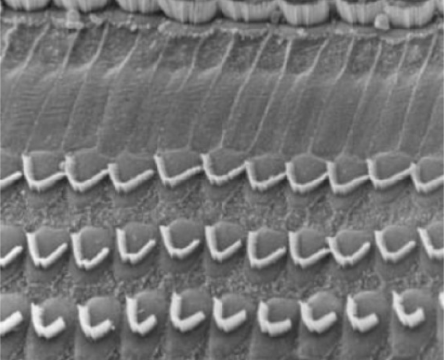
Photo credit: Carte du monde adapted from Vardion, transformed in SVG by Simon Eugster under licence CC BY-SA 3.0
“Why must Québécois French be my main language so that I can participate in your research project?”
This is a question we are frequently asked and that deserves to be answered.
Contrary to popular belief, there isn’t only one unique French language (and the same is true for all languages), but rather a great variety of French! Let’s begin with some historical context. With colonization, French spread outside of Europe to all the inhabited continents of the globe. In Quebec City, at the time of New France, thetypeofFrench spoken was similar to that used in Paris or other regions of France. However, French evolved in France and all the former colonies in a parallel manner, in part due to contact with other languages, such as English, in the case of Quebec. Today, Quebec French distinguishes itself by particularities in its vocabulary and expressions (for example, referring to a car as a “char”, or the expression “tire-toi une buche” – literally, “pull a log for yourself” [to sit on]) and sentence construction (for example, the “tu interrogatif”, as in “Il pleut tu?”*), but also pronunciation. For example, when it is placed before the vowels /i/ and /u/, the /t/ is pronounced “/ts/”, with a tiny /s/ (for example, the word tuque (toque – a winter hat or beanie – in English) is pronounced “tsuque”), and the d is pronounced “dz” (for example, dîner (dinner in English) is pronounced “dzîner”). Vowel pronunciation also varies. For example, the difference between the words “brun” and “brin” (brown and bit, respectively**) is markedly greater in Quebec French than in the type of French spoken in Paris.
It should be noted that within a same country, many types of French can coexist, such as Québécois French, Ontario French, Manitoba French and Acadian French in Canada. Not to mention the multitude of regional accents that can be found within the same variety! One needs only think of the accents heard in Quebec French, which vary by region – Montreal, Quebec, Lac-Saint-Jean, Charlevoix, Beauce…
So, why does this matter to us?
To study the mechanisms that allow us to perceive and produce speech, our lab uses stimuli (for example, recordings of vowels or syllables) that were created by speakers of Québécois French, since it’s the most common variety in Quebec City, where our studies take place. While the multiple varieties of French are a wealth in real life, in the context of our studies, these linguistic differences could affect our participant’s answers. By making sure that the participants have a common linguistic knowledge base and experiences, we can compare their results to speech or language tests knowing that the differences observed between the participants are not related to their language. The main language is thus a controlled variable!
Since the Quebec variety of French is sufficiently different from other varieties – such as the Belgian, Beninese, French, Swiss, Senegalese, and Togolese varieties – we must make sure that our participants are familiar with this variety so that they can perform well on our tests.
To mention one example: vowels are pronounced very differently throughout the French-speaking countries. If we ask our participants to identify Québécois vowels, their performance will vary according to their linguistic baggage, which isn’t the object of our studies. Our projects rather aim to understand the relationship between the brain and language and how this relationship evolves with age and the practice of musical activities. That’s why we must make sure that the participants all share a common language variety!
* In formal French, a declarative sentence is turned into a question by switching the verb and the pronoun’s positions, as follows:
Il pleut. (It is raining.)
Pleut-il? (Literally, “Raining it?” meaning Is it raining?)
Another way to turn it into a question is by adding “est-ce que”: Est-ce qu’il pleut?
In Quebec, mainly in informal contexts, the second person singular pronoun “tu” (you) can be added at the end of a declarative sentence to turn it into a question. In this case, it doesn’t act like a pronoun, in that it doesn’t depend on what other pronouns or subjects are present – “tu” rather serves to make the sentence into a question, just like switching the verb and pronoun or adding “est-ce que” does.
** This difference is akin to the difference between American and British English’s pronunciation of the word water: Americans might say “wawter” (like the word awe) while British people might say “woata” (oa as in boat).
Bibliography:
Brasseur, A. (2009). Les marqueurs phonétiques de la perception de l’accent québécois. [Mémoire de maîtrise, Université Laval]. http://hdl.handle.net/20.500.11794/20701
Chevalier, G. (2008). Les français du Canada : faits linguistiques, faits de langue. Alternative Francophone, Vol. 1(1), 80-97. http://ejournals.library.ualberta.ca/index.php/af
Lapointe, F. Les variétés de français dans le monde. Retrieved March 23, 2021 from the website: https://www.csn.qc.ca/francisation_info/les-varietes-de-francais-dans-le-monde/
Šeleg, M. (2010) Les particularités lexicales du français québécois. Verbum, 1, 55-62. https://www.researchgate.net/publication/330717173



